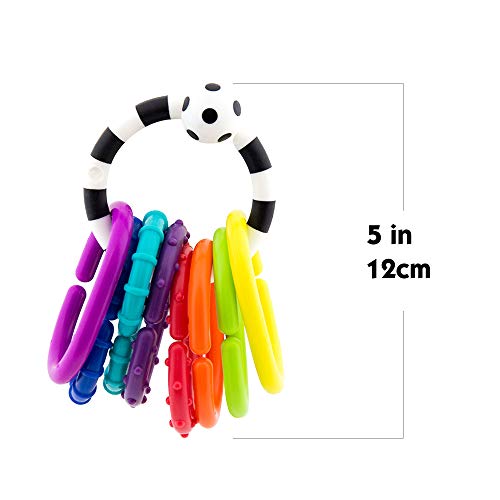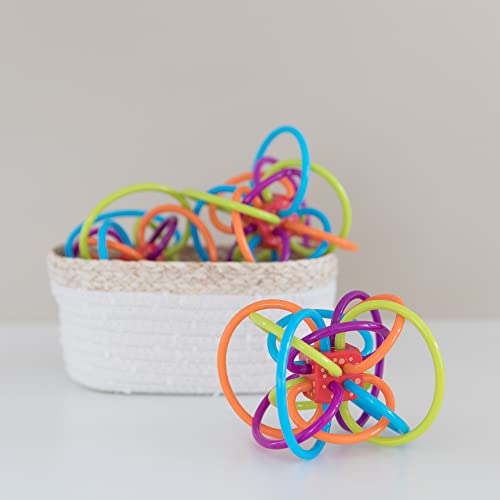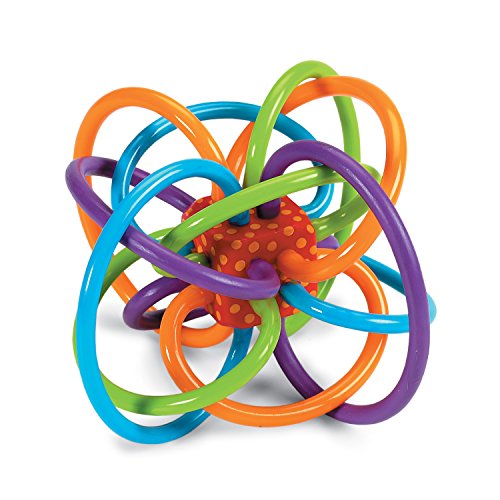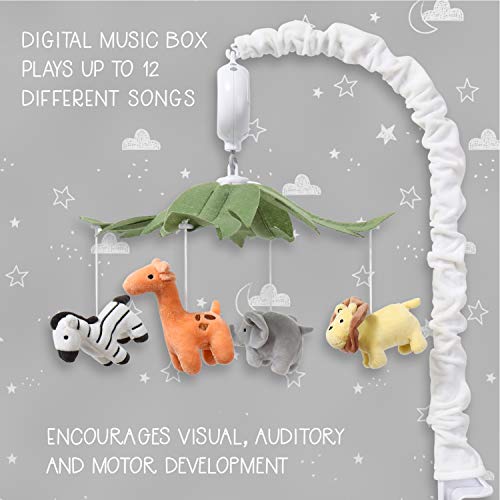Introduction
Motoric Development and why it is important
What is motoric development?
Motoric development is a crucial aspect of a baby's growth and development, as it encompasses the physical skills and abilities necessary for movement and exploration. From the moment they are born, babies begin to develop their motor skills, starting with basic reflexes and gradually progressing to more complex movements such as crawling, standing, and walking. As babies continue to grow and develop, their motor skills become increasingly refined, enabling them to explore their environment, interact with others, and engage in a variety of activities.
Early motoric development is particularly important, as it sets the foundation for future physical abilities and helps babies to build strength, coordination, and control. It also plays a crucial role in other areas of development, including cognitive, social, and emotional development. For example, as babies gain greater control over their movements, they are better able to explore and interact with their surroundings, which can stimulate their curiosity, creativity, and problem-solving abilities. In addition, as babies become more mobile, they are better able to engage with others and form social bonds, which can have a positive impact on their emotional well-being and overall development.
In this article, we will explore the different stages of motoric development in babies, from the early reflexes to the more complex movements of walking and running. We will also discuss the importance of motoric development for other areas of development and provide strategies for supporting motoric development in babies. Finally, we will examine the role of toys in motoric development and highlight some of the best types and categories of toys for supporting physical growth and development.
Motoric baby development
Motoric Baby Development and Its Impact on Other Baby Development Areas
Motoric development plays a critical role in other areas of baby development, including cognitive, social, and emotional development. Babies who experience delays or difficulties in motoric development may struggle in these other areas as well.
For example, motoric development is closely linked to cognitive development. As babies explore their environment and engage in physical activities, they are also building cognitive skills such as problem-solving, spatial awareness, and cause-and-effect reasoning. Research has shown that babies who experience delays in motoric development may also experience delays in cognitive development (Lejeune, Catale, & Hupkens, 2016).
Motoric development also impacts social and emotional development. As babies become more mobile and gain control over their bodies, they are better able to interact with their environment and with others. They can reach for toys, crawl towards caregivers, and explore their surroundings with greater ease. This increased mobility and exploration can help babies feel more confident, curious, and engaged with the world around them. On the other hand, babies who experience delays in motoric development may become frustrated, anxious, or disengaged (Campbell & Eaton, 1999).
Motoric baby development
Strategies for Supporting motoric Development in Babies
There are many strategies that parents and caregivers can use to support motoric development in babies. Here are a few examples.
Provide a safe and stimulating environment
Babies need a safe and stimulating environment that allows them to explore and practice their motor skills. This may include soft surfaces for crawling, age-appropriate toys and games, and child-proofed spaces that allow babies to move around freely.
Encourage tummy time
Tummy time is an important activity that helps babies develop the core strength and coordination they need for crawling, sitting, and walking. Parents and caregivers can encourage tummy time by placing babies on their stomachs for short periods throughout the day, starting from the first few weeks of life.
Engage in play activities
Play is a critical way for babies to practice and refine their motor skills. Parents and caregivers can engage in play activities with babies, such as rolling a ball back and forth, playing with blocks, or setting up an obstacle course.
Provide age-appropriate toys and games
Toys and games that are age-appropriate and designed to support motoric development can be helpful for babies. For example, toys that encourage grasping, reaching, and stacking can help babies develop fine motor skills, while toys that require pushing, pulling, or crawling can help develop gross motor skills.
By providing a supportive environment and engaging in activities that promote motoric development, parents and caregivers can help babies reach their motoric milestones and support their overall development.
Motoric baby development
Milestones in motoric baby development
As babies grow and develop, they acquire new physical abilities that help them interact with the world around them. From the early reflexes of the newborn to the complex movements of the toddler, motoric development plays a crucial role in a baby's physical and cognitive development. By observing and tracking a baby's motoric milestones, parents and caregivers can better understand their progress and support their development with age-appropriate activities and toys. In this section, we'll explore the key milestones for motoric development in babies from birth to 12 months, highlighting the skills and movements that babies typically develop at each stage.
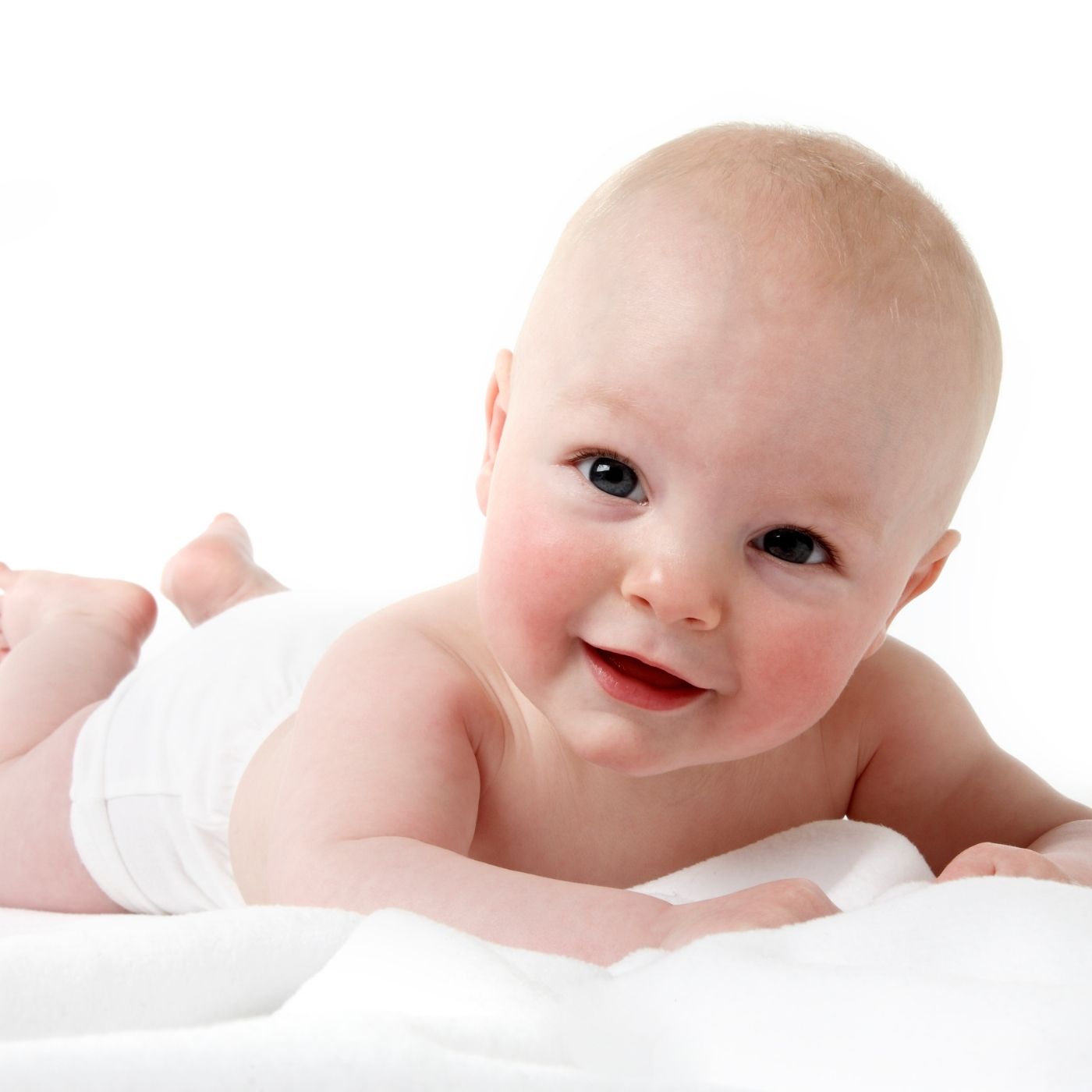
Motoric baby development milestones
0-2 months
- Holds head up when on tummy
- Infants grasp reflexively from birth, but during the first 2 months they may be able to hold a rattle for a short time and glance from one object to another
- Moves both arms and both legs
- Opens hands briefly

Motoric baby development milestones
2-4 months
- Holds head steady without support when she is being held
- Holds a toy when you put it in her hand
- Uses her arm to swing at toys
- Brings her hands to mouth
- Pushes up onto her elbows/forearms when on tummy
Rolls over from tummy to back - Reaches for and grasps toys

Motoric baby development milestones
4-6 months
- Explores things by putting them in her mouth
- Reaches to grab toys she wants
- Closes her lips to show that she doesn’t want more food/milk
- Developing object permanence, which means realizing that objects still exist even when they can't be seen
- Starting to reach for and grasp objects intentionally
- Recognizing their own name and responding to it
- Engaging in more complex vocalizations, such as laughter and squeals

Motoric baby development milestones
6-9 months
- Able to get to a sitting position by herself and sit without support.
- Able to move things such as toys from one hand to her other hand.
- Uses her fingers to “rake” food towards herself.
- Crawls on hands and knees
- Pulls up to stand with support
- Begins to cruise (walking while holding onto furniture)
- Begins to develop pincer grasp

Motoric baby development milestones
9-12 months
- Can pull up to stand.
- Cruising furniture that is walks, holding on to furniture.
- Drinks from a cup without a lid while you hold it.
- Picks things up between her thumb and pointer finger, like small bits of food.
- Stands without support
- Takes first independent steps
- Crawls up stairs
- Can use pincer grasp to pick up small objects
How Baby Toys Can Help Motoric Development
From the moment they are born, babies are constantly learning and developing new skills. One crucial aspect of their growth is motoric development, which refers to the development of their physical abilities and movements. As they progress through different stages of development, babies rely on their surroundings and the objects they interact with to help them learn and practice these movements. This is where toys come in. Toys can be an excellent tool for promoting motoric development in babies, and can help them develop important skills like balance, coordination, and fine motor control. By choosing the right toys and incorporating them into playtime, parents and caregivers can support and enhance their baby's physical development.
What Types of Baby Toys Are Particularly Good for Motoric Baby Development?
Ball toys
One type of toy that is particularly beneficial for motoric development is balls. Babies enjoy playing with balls, and they are great for encouraging reaching and grasping. Soft, lightweight balls are ideal for young babies who are still developing their hand-eye coordination, while larger and heavier balls can be used as they grow and become more proficient at catching and throwing.
Stacking toys
Stacking toys are another excellent choice for promoting motoric development. These toys can help babies develop their hand-eye coordination and fine motor skills, as well as problem-solving and spatial awareness. Stacking toys come in various shapes and sizes, from simple ring stackers to more complex blocks and shape sorters. As babies grow and develop, they can progress to more challenging stacking toys that require greater dexterity and problem-solving skills.
Ride-on toys
Ride-on toys are also a great option for promoting motoric development. They help babies develop their balance, coordination, and strength as they learn to sit, crawl, and eventually walk. Ride-on toys come in different forms, such as push-along walkers, ride-on cars, and rocking horses. These toys offer a fun and engaging way for babies to practice their motor skills and build confidence in their physical abilities.
Toys that encourage movement
Other types of toys that can support motoric development include pull-along toys, activity gyms, and play tunnels. Pull-along toys encourage crawling and walking, while activity gyms provide a variety of textures and activities for babies to explore. Play tunnels are excellent for encouraging crawling and providing a safe space for babies to practice their movements.
Selecting the right toys
When selecting toys for motoric development, it's important to choose age-appropriate toys that are safe and free from potential hazards such as small parts that can be choking hazards. Toys that can be easily cleaned and disinfected are also important, as babies are prone to putting objects in their mouths. Additionally, parents and caregivers should supervise babies while they play with toys to ensure their safety and prevent accidents.
In summary, toys play a crucial role in supporting motoric development in babies. By choosing age-appropriate toys that support specific aspects of physical development, parents and caregivers can help babies develop essential motor skills, such as reaching, grasping, crawling, and walking. Toys such as balls, stacking toys, ride-on toys, pull-along toys, activity gyms, and play tunnels are all excellent choices for promoting motoric development and encouraging physical activity and exploration.
THE RIGHT TOYS CAN HELP YOUR BABY DEVELOP Motoric SKILLS
In conclusion, choosing the right toys for cognitive development in babies is essential. Sensory toys, sorting and stacking toys, puzzles, books, and open-ended toys are all excellent choices for supporting cognitive development in babies. Parents and caregivers should choose toys that are age-appropriate and provide the right level of stimulation for their babies. By providing babies with the right toys and play activities, parents and caregivers can help support their cognitive development and set them up for success in the future.
References:
Campbell, S. K., & Eaton, W. O. (1999). Developmental coordination disorder: New directions for clinical and educational interventions. Journal of Learning Disabilities, 32(3), 255-263.
Lejeune, L. M., Catale, C., & Hupkens, V. (2016). Motor development and cognitive development: Are they intertwined? Pediatric Physical Therapy, 28(2), 194-201.
Sources used related to motoric baby development and milestones:
Centers for Disease Control and Prevention (CDC):
- CDC "Important Milestones: Your Baby By Two Months": https://www.cdc.gov/ncbddd/actearly/milestones/milestones-2mo.html
- CDC "Important Milestones: Your Baby By Four Months": https://www.cdc.gov/ncbddd/actearly/milestones/milestones-4mo.html
- CDC "Important Milestones: Your Baby By Six Months": https://www.cdc.gov/ncbddd/actearly/milestones/milestones-6mo.html
- CDC "Important Milestones: Your Baby By Nine Months": https://www.cdc.gov/ncbddd/actearly/milestones/milestones-9mo.html
- CDC "Important Milestones: Your Baby By One Year": https://www.cdc.gov/ncbddd/actearly/milestones/milestones-1yr.html
- CDC "Choosing Toys for Babies and Toddlers" from the Centers for Disease Control and Prevention: https://www.cdc.gov/ncbddd/childdevelopment/positiveparenting/choosingtoys.html
Pathways.org:
- Pathways.org "Milestones at 2 Months": https://pathways.org/milestones/baby-milestones-at-2-months/
- Pathways.org "Milestones at 4 Months": https://pathways.org/milestones/baby-milestones-at-4-months/
- Pathways.org "Milestones at 6 Months": https://pathways.org/milestones/baby-milestones-at-6-months/
- Pathways.org "Milestones at 9 Months": https://pathways.org/milestones/baby-milestones-at-9-months/
- Pathways.org "Milestones at 12 Months": https://pathways.org/milestones/baby-milestones-at-12-months/
- Pathways.org "Toys and Developmental Milestones" from Pathways.org: https://pathways.org/topics-of-development/toys-and-development-milestones/
American Academy of Pediatrics (AAP):
- "Developmental Milestones" - This page provides an overview of what to expect in terms of your child's development from birth to 5 years old: https://www.healthychildren.org/English/ages-stages/baby/Pages/Developmental-Milestones-0-3-Months.aspx
- "Tummy Time" - This page provides information on why tummy time is important for babies and how to do it safely: https://www.healthychildren.org/English/ages-stages/baby/sleep/Pages/Tummy-Time.aspx
- "Physical Developmental Delays" - This page discusses possible causes of physical developmental delays and when to seek help from a pediatrician: https://www.healthychildren.org/English/health-issues/conditions/developmental-disabilities/Pages/Physical-Developmental-Delays-What-to-Look-For.aspx
- "Motor Delays" - This page provides information on what motor delays are, how they are diagnosed, and what treatments are available: https://www.healthychildren.org/English/health-issues/conditions/developmental-disabilities/Pages/Motor-Delays.aspx
- "Car Safety Seats: A Guide for Families" - This page provides information on how to choose and use car seats correctly to keep babies safe while traveling: https://www.healthychildren.org/English/safety-prevention/on-the-go/Pages/Car-Safety-Seats-Information-for-Families.aspx
- "Motor Development in Infants: The Role of Toys" from the American Academy of Pediatrics: https://pediatrics.aappublications.org/content/131/6/e20182128
World Health Organization (WHO):
- Infants (0-1 year): https://www.who.int/news-room/q-a-detail/infants-(0-1-year)
- Early childhood development: https://www.who.int/maternal_child_adolescent/topics/child/development/en/
- Motor development in early childhood: https://www.who.int/maternal_child_adolescent/topics/child/development/motor-development/en/
- Training course on child growth assessment: https://www.who.int/training-activities/training-course-on-child-growth-assessment
- The importance of play for healthy child development: https://www.who.int/news-room/commentaries/detail/the-importance-of-play-for-healthy-child-development
- Parenting for Lifelong Health: 0-3 years: https://www.who.int/publications-detail/parenting-for-lifelong-health-0-3-years
WebMD:
- "Motor Milestones: 3 to 9 Months" - https://www.webmd.com/parenting/baby/baby-development-3-to-9-months#1
- "Motor Milestones: 10 to 12 Months" - https://www.webmd.com/parenting/baby/baby-development-10-to-12-months#1
- "Gross Motor Skills in Children" - https://www.webmd.com/parenting/raising-fit-kids/move/gross-motor-skills
- "Fine Motor Skills in Children" - https://www.webmd.com/parenting/raising-fit-kids/move/fine-motor-skills
- "Baby Development: Your 7-Month-Old" - https://www.webmd.com/parenting/baby/development-milestones-7-month-old
- "Best Toys for Babies: Boost Their Brainpower and Motor Skills" from WebMD: https://www.webmd.com/parenting/baby/features/best-toys-for-babies-boost-their-brainpower-and-motor-skills














